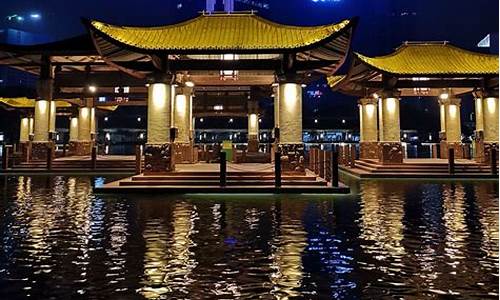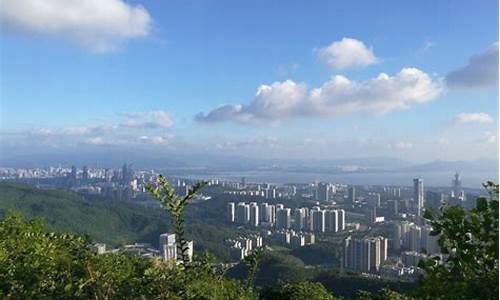您现在的位置是: 首页 > 游览路线 游览路线
重庆旅游攻略手抄报英文简单_重庆旅游英语手抄报
佚名 2024-06-14 人已围观
简介重庆旅游攻略手抄报英文简单_重庆旅游英语手抄报下面,我将用我自己的方式来解释重庆旅游攻略手抄报英文简单的问题,希望我的回答能够对大家有所帮助。让我们开始讨论一下重庆旅游攻略手抄报英文简单的话题。1.关于旅行的英语手抄报资料、内容2.旅游景点介绍英文手抄
下面,我将用我自己的方式来解释重庆旅游攻略手抄报英文简单的问题,希望我的回答能够对大家有所帮助。让我们开始讨论一下重庆旅游攻略手抄报英文简单的话题。
1.关于旅行的英语手抄报资料、内容
2.旅游景点介绍英文手抄报 旅游地点英语手抄报
3.介绍中国旅游景点手抄报 介绍中国景点的英语手抄报
4.重庆旅游景点的英语介绍 重庆景点用英语介绍

关于旅行的英语手抄报资料、内容
《国外旅游见闻小报手抄报模板 寒暑假夏令营小学生幼儿园旅行》百度网盘资源免费下载链接:/s/1LQrnXDZ2frFaQvj6mijK2A
提取码:qh7b国外旅游见闻小报手抄报模板 寒暑假夏令营小学生幼儿园旅行|wd34旅游见闻小报(39)|28套|13套国家介绍|英国小报.jpg|英国小报.docx|泰国小报5.jpg|泰国小报5.docx|泰国小报4.jpg|泰国小报4.docx|泰国小报3.jpg|泰国小报3.docx|泰国小报2.jpg|泰国小报2.docx|泰国小报1.jpg
旅游景点介绍英文手抄报 旅游地点英语手抄报
关于英语的手抄报国庆节英语手抄报简单又好看
走进美国手抄报英语
八2八7同学用英文手抄报为祖国母亲庆生
关于爱我中华的英语手抄报 爱我中华的手抄报
关于国家的英语手抄报关于英语手抄报
杨陵高新初级中学学生用英语手抄报向祖国献礼
杨陵高新初级中学学生用英语手抄报向祖国献礼
英语关于科技的手抄报 关于科技的手抄报
英语和科学手抄报优秀作品欣赏
简单又漂亮的英语国庆节手抄报有哪些英语手抄报
了一份又一份精美的英语手抄报向全校的同学介绍他们喜爱的英语国家
英语中国的风景手抄报 英语中秋手抄报
介绍重庆的英语手抄报英语手抄报
旅游国家英语手抄报 我的家英语手抄报初中自我介绍英文手抄报 初中手
培养学生的创新意识特举办以国家运动为主题的英语手抄报展
欧洲国家英语手抄报
英美国家风情介绍英文手抄报绘制大赛圆满落幕
介绍中国旅游景点手抄报 介绍中国景点的英语手抄报
介绍秦皇岛的英文手抄报内容
Qinhuangdao is a beautiful coastal city known for its freezing-free nice port, historical town of Shanhaiguan and summer resort Beidaihe. Located in the northeast of Hebei Province with Bohai Sea on the south, Mt. Yanshan on the north, Liaoning Province on the east and Beijing and Tianjin to the west, Qinhuangdao joins Northeast China and North China as a transportation connection in the middle of Round Bohai Sea Economic Rim. Qinhuangdao covers a total area of 7812.4 square kilometers and has a population of 2.73 million.
In 215 BC, China’s first emperor Qinshihuang arrived in Jieshi (ancient name of Qinhuangdao) on his fourth eastern inspection and sent Lusheng and Han Zhong out to the sea to look for the immortal for him. Qinhuangdao thus got its name. Qinhuangdao is the only city in China that was named after an emperor.
Qinhuangdao has a long history of tourism. In 1898, the Qing Dynasty government opened Qinhuangdao as a commercial port and made Beidaihe a summer resort for foreigners. Well-known people came to Qinhuangdao from home and abroad in large numbers. In 1954, a great man Mao Zedong stood here watching the sea and wrote the immortal poem entitled “Langtousha Beidaihe”, which made Qinhuangdao known more widely. In 1979, the State Council confirmed Qinhuangdao a class A open up tourist city. In 1984, the State Council approved Qinhuangdao one of the first cities opened to the outside world. In 1998, Qinhuangdao was honorably entitled one of China’s first excellent tourist cities.
Qinhuangdao enjoys pleasant climate, splendid landscape and beautiful scenery with the Great Wall running through to make a world-known tourist resort. The coastline stretches 126.4 kilometers. Over 40 scenery areas such as the First Pass Under Heaven, the Old Dragon’s head, the Pigeons’ Nest, the Golden Beach, Emperor Qinshihuang’s Immortal-seeking Seaside, Mt. Zushan Scenic Area, Qinhuangdao Wildlife Park and Shanhaiguan Customs Museum, joining up to become a tourist system of the Great Wall, the beaches and ecological tours. The best liked among them are splendid tours of the Great Wall culture, beach holidays, historical surveys, bird-watching, celebrity villas, National Geology Park, mountain sightseeing and sports tours , together with local culture tours of Shanhaiguan Great Wall Festival, Lady Mengjiang Temple Fair, Sea-watching Fair and Changli Dry Red Wine Festival. Shanhaiguan and the Old Dragon’s Head, together with Beidaihe Beach are both elected “Top 40 Tourist Destinations of China”. Till 2003, the National Tourist Administration has granted 4 A titles to Shanhaiguan scenic areas (including the Old Dragon’s Head, the First Pass Under Heaven, Lady Mengjiang Temple and the Horn Hill), Xin’ao Marine World, the Wildlife Park, Nandaihe Amusement Center, Jifa Agricultural Sightseeing Park, Yansai Lake and Longevity Hill, the largest in number in Hebei Province.
Qinhuangdao has developed sufficient tourist functional services. 56 star hotels, over 400 health resorts, 180 thousand beds for visitors, 78 travel agencies, 96 designated hotels and shops and over 4500 tour buses can well satisfy tourist demands of eating, living, traveling, shopping and entertainment. Qinhuangdao receives over 8 million tourists a year. Tourism has become a backbone industry and a new economic growth point.
Qinhuangdao is home of fruits well known in northern China. Widely liked are crabs and prawns, Changli grapes, Shanhaiguan cherries and wild Chinese gooseberries, as well as chestnuts and walnuts.
Qinhuangdao enjoys sufficient transportation. State highways No. 102 and No. 205 and railways of Beijing-Shenyang, Beijing-Qinhuangdao, Datong-Qinhuangdao and Qinhuangdao-Shenyang express railway join in the city. The Beijing-Qinhuangdao expressway shortens the trip to Beijing to only 2 hours. Shanhaiguan Airport has flights to Beijing, Guangzhou, Shanghai and some other big cities. Passenger ship liners are in service from Qinhuangdao to Dalian, Yantai and Inchon of Korea. The developed transport network makes tours simple and easy in Qinhuangdao.
Qinhuangdao is building itself as a Great Wall seaside park to become a city strong in tourism. A pearl shining gloriously at Bohai Sea coast, Qinhuangdao will offer its visitors more splendid tours and wonderful holidays.
希望采纳!~~
参考资料:
你是秦皇岛的吗
你哪儿个学校的。我是迎秋里的6.3
旅游英语手抄报内容简单
旅游英语手抄报可以写一下内容。
一、英语励志名言。想一些名家大师的名言名句。比如苏格拉底,柏拉图等。
二、英语日记。自己或者同学写的旅游文章日记等,增加手抄报的趣味性。
英语知识。一些单词的知识点,语法等知识点都是比较好的手抄报的内容。
用英语介绍汕头市中山公园 不要太长 适合手抄报
作文如下。
Shantou Zhongshan Park is surrounded by water, Yuemei River surrounds the park, and Zhongshan Bridge, Yuemei bridge and Yingchun bridge connect the park with the land in the urban area.
Yujian Lake in the park covers an area of nearly 100 mu, with beautiful scenery and is famous at home and abroad。
中文版:汕头中山公园四周环水,月眉河环绕园区,中山桥、月眉桥和迎春桥三座桥梁将公园与市区陆地连在一起,园区的玉鉴湖面积近百亩,风光绮丽,名闻海内外。
介绍中国景点英语手抄报
.愿中国青年都摆脱冷气,只是向上走,不必听自暴自弃者流的话。能做事的做事,能发声的发声。有一分热,发一分光。就令萤火一般,也可以在黑暗里发一点光,不必等候炬火。
.我愿为共产主义事业奋斗终身。
红船划破一湖波,风雨征途砥砺磨;盛世应知来不易,同心共唱百年歌。
风雨载,中流砥柱;拼搏载,辉煌无数;进取载,世界立足。率领华夏复兴,和平发展瞩目。歌舞盛世祝福,未来更加幸福!
透过历史中纷乱的烟尘,我与你相望。在你深邃的目光里,我看到了炎黄子孙千年的自豪。你是民生百味,是曾经辉煌,亦是未来可期。
下次你路过,人间已无我,但我的国家,依然是五岳向上,一切江河依然是滚滚向东,民族的意志永远向前,向着热腾腾的太阳,跟你一样。
我们老师要我们做一张海报,要介绍一个旅游景点,用英文,紧急!
A Trip To Beijing
On July 5th my parents took me to Beijing. We stayed at Huabei Hotel. On the first day, we went to the Great Wall. The Great Wall is very long and old. It has millions of bricks. Each brick is very big and heavy. Lots of people from different countries like climbing the Great Wall. We felt very tired when we climbed to the top of the Great Wall.
We also went to the Palace Museum. The Palace Museum has 9999 palaces. It has a very long history. I bought a lot of souvenirs of the Palace Museum. What nice palaces these are! I visited the Palace Museum and felt excited. If you want to know more about the Palace Museum, you can go to Beijing and have a look.
The following days, we went to the Summer Palace, Tian Tan, North Lake and Xiang Hill. I now know more about the history of China. I also like modern Beijing. The 2008 Olympic Games will be held in Beijing.
Later, I went back with my parents by train. I really enjoyed the trip to Beijing.
重庆旅游景点的英语介绍 重庆景点用英语介绍
旅游手抄报简单又好看
旅游手抄报文案
“旅”是旅行,外出,即为了实现某一目的而在空间上从甲地到乙地的行进过程;“游”是外出游览、观光、娱乐,即为达到这些目的所作的旅行。二者合起来即旅游。所以,旅行偏重于行,旅游不但有“行”,且有观光、娱乐含义。
中央纪委国家监委网站的相关统计数据显示,“中秋国庆期间违反中央八项规定精神问题监督举报曝光专区”近三年中通报了989起案例。其中,数量排名第五位的是公款国内旅游,109起。
2021年,国内旅游总人次32.46亿,同比增长12.8%。国内旅游收入(旅游总消费)2.92万亿元,同比增长31.0%。
旅游(Tour)来源于拉丁语的“tornare”和希腊语的“tornos”,其含义是“车床或圆圈;围绕一个中心点或轴的运动。”这个含义在现代英语中演变为“顺序”。后缀—ism被定义为“一个行动或过程;以及特定行为或特性”,而后缀—ist则意指“从事特定活动的人”。词根tour与后缀—ism和—ist连在一起,指按照圆形轨迹的移动,所以旅游指一种往复的行程,即指离开后再回到起点的活动;完成这个行程的人也就被称为旅游者(Tourist)。
各种旅游技术定义所提供的含义或限定在国内和国际范畴上都得到了广泛的应用。技术定义的采用有助于实现可比性国际旅游数据收集工作的标准化。
求关于山西旅游景点的手抄报 急。。。。。。。
山西太原晋源晋祠——相距20公里范围内的景点:晋源区的天龙山石窟、古晋阳遗址、龙山石窟,清徐县的宝梵寺、清泉寺。 山西晋中祁县乔家大院——相距20公里范围内的景点:祁县古城、渠家大院、九沟风景旅游区 长裕川晋商茶庄博物馆、罗贯中纪念馆、兴梵寺、以及太谷县的三多堂。 山西晋中平遥古城——相距20公里范围内的景点:双林寺(原名中都寺)、镇国寺(原名京城寺)。山西忻州五台山——相距20公里范围内的景点:山西临汾洪洞大槐树寻根祭祖圆——相距20公里范围内的景点:广胜寺、明代(苏三)监狱和苏三还愿处、历山舜庙风景旅游区、乾元山风景旅游区。山西朔州应县佛宫寺—— 相距20公里范围内的景点:净土寺(又称北寺)、长城、古城、三岗、四镇等古遗址。山西大同浑源恒山——相距20公里范围内的景点:栗毓美墓、圆觉寺、永安寺、云峰寺等。山西大同云冈石窟——相距20公里范围内的景点:善化寺、九龙壁、华严寺、大同长城。山西晋城陵川陵川王莽岭——相距20公里范围内的景点:棋子又名谋棋山、红叶风景区、佛子山区风景区山西晋城阳城皇城相府——相距20公里范围内的景点:蟒河风景区。山西运城解州关帝庙——相距20公里范围内的景点:舜帝陵景区、九龙山风景区、关王庙。 山西临汾吉县壶口瀑布—— 相距20公里范围内的景点:山西运城芮城永乐宫——相距20公里范围内的景点:
手抄报:介绍一处旅游景点
你好!重庆江津四面山,风景区里畅享非凡生活。。。 天然氧吧,名副其实的大自然怀抱,尽情畅享“森呼吸” 。四面山自然资源丰富,森林覆盖率高,气候宜人,负氧离子含量每立方厘米超过2000个,高居重庆各大旅游区榜首,非常适合在此度假养生。
泉水豆花·四面山老腊肉·乡村野菜·烤鱼·烤羊。棋牌室,多功能厅(会议,触摸点歌) 附近还可垂钓,是你旅游、度假、避暑、食宿、宴会、休闲的好地方. 单人间、双人间、多人间,亲子实木上下床等各种选择,恭侯你的光临!提前预定还有优惠哦。
大家帮帮忙,用英语来介绍家乡的旅游景点,我的家乡是重庆,字数90个字
ChongQing is in the south of China. It position is longitude 105-110degrees east,and locate in latitude 28-32 degrees north.ChongQing is in the center zone of Yangtze River Three Gorges .The acreage of Chongqing is 82400 square kilometer and the whole acreage is double than the whole acreage of TianJing BeiJing and ShangHai.So it is the largest city in China.There are more than 31000000 people in ChongQing.The proportion of minority is 5.7%.The climate in ChongQing is Sub-tropical monsoon climate.What's more, There are 13 sections 18
counties and 5 self-governing counties in ChoinQing.
求一篇英语作文(推荐外国友人到重庆旅游,从小吃,出行,住宿,景点几个方面来介绍)
My home is located in southwest China, surrounded by mountains, there are two river, the Yangtze River and Jialing River, which is the largest city in China with a total population of over thirty million. We are not only rich in natural resources in Chongqing, there are many world famous attractions, such as the Dazu Rock Carvings, the Three Gorges. Parks, squares and Riverside Road is a good place for leisure citizens. Chongqing hot pot is famous. We are Chongqing, transport facilities, to Chongqing, the best tourist season in the spring, neither cold nor hot. In recent years we Chongqing, Chongqing has changed dramatically, warm, friendly, hardworking, intelligent Chongqing determined to build their home more beautiful.
我家位于中国西南,群山环绕,有两条江,长江和嘉陵江,它是中国最大的城市,总人口达三千多万。我们重庆不仅自然资源丰富,还有很多世界著名的名胜,如大足石刻、三峡。公园、广场和滨江路是市民们休闲的好去处。重庆火锅也是举世闻名的。我们重庆交通便利,来重庆最好的旅游时节是春天,不冷不热。我们重庆最近几年,重庆发生了巨变,热情、友好、勤劳、智慧的重庆人决心把自己的家乡建设得更加美好。
重庆旅游景点英语介绍
The Dazu Rock Carvings are a series of Chinese religious sculptures and carvings, dating back as far as the 7th century A.D., depicting and influenced by Buddhist, Confucian and Taoist beliefs. Listed as a World Heritage Site, the Dazu Rock Carvings are made up of 75 protected sites containing some 50,000 statues, with over 100,000 Chinese characters forming inscriptions and epigraphs. The sites are located on the steep hillsides within Dazu County (near the city of Chongqing, China), with the high points being the carvings found on Mount Baoding and Mount Beishan.
The earliest carvings were begun in 650 A.D. during the early Tang Dynasty, but the main period of their creation began in the late 9th century, when Wei Junjing, Prefect of Changzhou, pioneered the carvings on Mount Beishan, and his example was followed after the collapse of the Tang Dynasty by local and gentry, monks and nuns, and ordinary people during the Five Dynasties and Ten Kingdoms Period (907-65). In the 12th century, during the Song Dynasty, a Buddhist monk named Zhao Zhifeng began work on the elaborate sculptures and carvings on Mount Baoding, dedicating 70 years of his life to the project.
The carvings were listed as a World Heritage Site in 1999, citing "their aesthetic quality, their rich diversity of subject matter, both secular and religious, and the light that they shed on everyday life in China during this period. They provide outstanding evidence of the harmonious synthesis of Buddhism, Taoism and Confucianism."
The Three Gorges region is a scenic area along the Yangtze River in China with a total length of approximately 200 km. The Three Gorges occupy approximately 120 km within this region. Although it is primarily famous for its scenery, the Three Gorges region is historically and culturally an important region in China.
The Three Gorges region is located along the Yangtze River between the cities of Fengjie and Yichang in Chongqing municipality and Hubei province.
Currently the Three Gorges region is most famous for the Three Gorges Dam.
Qutang Gorge 瞿塘峡 8 from Baidicheng (Fengjie) to Daxi
Wuxia Gorge 巫峡 45 from Wushan to Guandukou (Badong)
Xiling Gorge 西陵峡 66 from Zigui to Nanjin Pass (Yichang)
人民大礼堂找不到...新重庆是个什么东西... 将就吧
重庆景点英语介绍
重庆景点英语介绍如下:
重庆千厮门嘉陵江大桥,全长720M,起于重庆市渝中区,在洪崖洞旁跨越嘉陵江到达江北区江北城,并在渝中半岛通过连接隧道与东水门长江大桥北岸桥台相接,为跨江公路和轨道交通两用桥。通车后,从江北嘴到渝中区沧白路仅需几分钟。
Chongqing qiansimen Jialing River Bridge, with a total length of 720m, starts in Yuzhong District, Chongqing, crosses Jialing River near Hongya cave to Jiangbei City, Jiangbei District.
And connects with the north bank abutment of dongshuimen Yangtze River Bridge through connecting tunnel in Yuzhong Peninsula, which is a cross river highway and rail transit bridge.
重庆位于中国西南地区,是一座非常美丽的城市,它被称为“山城”,是中国历史文化名城之一,这里风景非常美丽,欢迎来到重庆旅游。
Chongqing is located in the southwest of China,is a very beautiful city,It is known as the" mountain city of china".Chongqing is a national historical and cultural cities,The scenery here is very beautiful, welcome to Chongqing tourism.
介绍重庆的5句英语
1、Chongqing is located in the southwest of the mainland of China, along the Yangtze river.
译文:重庆位于中国大陆的西南部,在长江沿岸。
2、Chongqing is one of the four municipalities of the PRC, one of China's five major cities, a GROUP URBAN made from a large city (Chongqing Downtown),and six regional central city that population of over one million, and 25 other counties.
译文:重庆是中华人民共和国四个直辖市之一,中国五大中心城市之一,是一个由一座特大城市(重庆主城区),和六个人口超过百万的区域性中心城市,以及其他25个区县共同形成的一个组团式城市。
3、Chongqing is famous for its foggy weather in spring and winter days, which gives this city a nickname of "wu du", in English "foggy city".
译文:重庆著名的是春季和冬季的大雾天气,使这个城市的绰号“雾都”,英文“雾都”。
4、The best time of Chongqing is spring and autumn.
译文:重庆最美好的时光是春天和秋天。
5、The world map hanging in the halls of the United Nations, marked only the names of four cities in China, one of which is Chongqing.
译文:悬挂在联合国大厅的世界地图上,仅仅标出了中国四个城市的名字,其中一个就是重庆。
扩展资料
重庆的地理环境:
重庆位于中国西南部、长江上游地区,地跨东经105°11'~110°11'、北纬28°10'~32°13'之间的青藏高原与长江中下游平原的过渡地带。东邻湖北、湖南,南靠贵州,西接四川,北连陕西;辖区东西长470千米,南北宽450千米,幅员面积8.24万平方千米。
重庆地势由南北向长江河谷逐级降低,西北部和中部以丘陵、低山为主,东南部靠大巴山和武陵山两座大山脉,坡地较多,有“山城”之称。总的地势是东南部、东北部高,中部和西部低,由南北向长江河谷逐级降低。
百度百科-重庆
好了,今天我们就此结束对“重庆旅游攻略手抄报英文简单”的讲解。希望您已经对这个主题有了更深入的认识和理解。如果您有任何问题或需要进一步的信息,请随时告诉我,我将竭诚为您服务。









